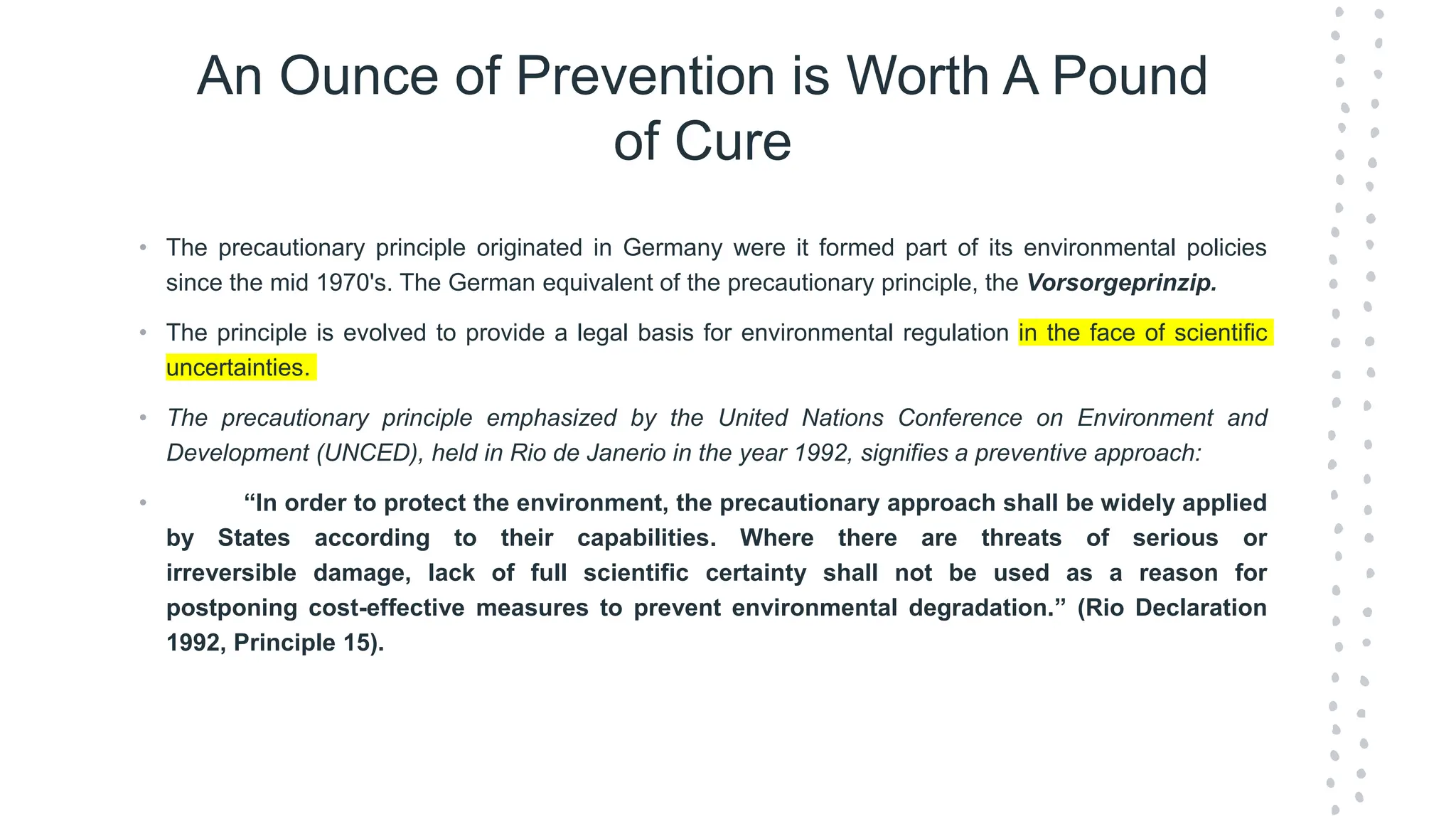The precautionary principle originated in Germany in the 1970s and has since been incorporated into international environmental agreements and the domestic laws of many countries. It emphasizes preventative action when there is scientific uncertainty about threats of serious or irreversible environmental damage. While the legal status of the principle in international law is still evolving, several international courts and tribunals have applied or referred to it in their decisions. The precautionary principle may be gaining acceptance as a general principle of law recognized by civilized nations.













![Precautionary Principle and its judicial
application in India
•In Vellore Citizen Welfare Forum v Union of India(1996) 5 SCC 647 at 658, the
Supreme Court identified three elements to the precautionary principle:
1. ‘[e]nvironmental measures- by the State government and the statutory authorities -
must anticipate, prevent and attack the causes of environmental degradation; (Principle
of Prevention)
2. ‘[w]here there are threats of serious and irreversible damage, lack of scientific
certainty should not be used as a reason for postponing measures to prevent
environmental degradation; (a step beyond mere prevention)
3.The ‘onus of proof’ is on the actor or developer or industrialist to show the actions are
environmentally benign.(as conceived by the Court, as the strong version.)](https://image.slidesharecdn.com/precautionaryprinciple-240308193315-d4aba76c/75/Precautionary-Principle-in-Environmental-Law-14-2048.jpg)









































